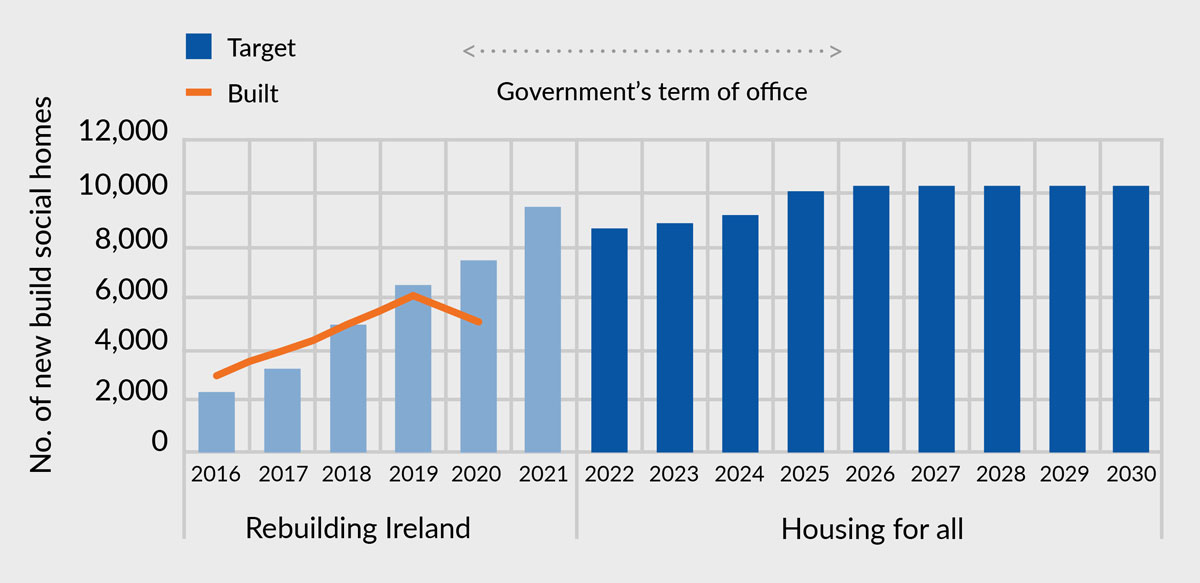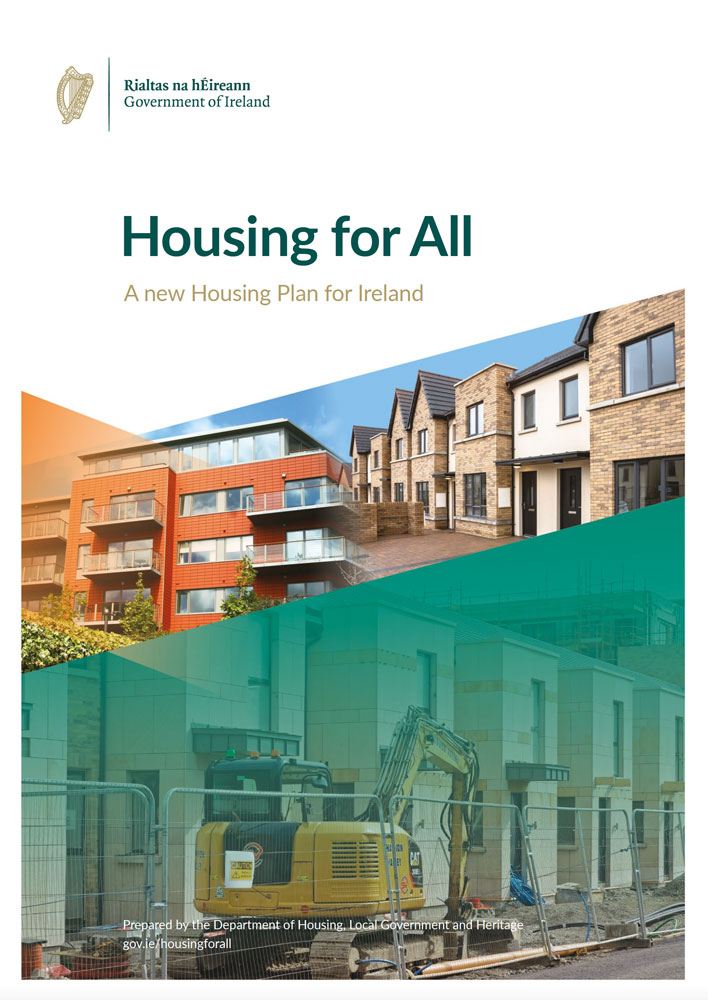Housing for All
Is the government’s strategy a solution to Ireland’s housing crisis?

STRATEGY
Image: Istock

Camille Loftus
Executive Director, Housing Alliance
The Housing Alliance is a collaboration between six of Ireland’s largest Approved Housing Bodies (AHBs). AHBs are not-for-profit organisations providing homes for people who can’t afford to provide their own.
The law governing AHBs means that investment in this kind of housing is about as secure as it can get. AHBs must have as their main purpose providing homes to meet housing need and they cannot distribute profits, surpluses, dividends, etc. Instead, all of an AHB’s assets and resources must be used only to alleviate housing need.
The AHB sector has been growing in Ireland over the past 30 years, and now Housing Alliance members are some of the largest non-state providers of secure, affordable housing to people in need. The launch of government’s housing strategy, Housing for All, was therefore keenly anticipated by Housing Alliance members. So is the plan a cure for Ireland’s housing crisis?
Plan reviewed
Housing for All commits massive amounts of public funding to housing. If the plan fails to address the housing crisis in Ireland, it won’t be for lack of exchequer spending. There are many different dimensions to the housing crisis, and how resources and investment will be distributed across these dimensions is yet to be revealed. However, there are some clear directions at this point.
Overall, two-thirds of the targeted housing output is for purchase or rent in the private sector – often with public subsidy. The commitment to building social homes is welcome, but the social housing targets set out in Housing for All do not expand on the level of ambition in its predecessor, Rebuilding Ireland.

The number of new social homes being built has been severely impacted by COVID-19, however, it is clear that exceeding the output of 6,000-plus social homes achieved in 2019 will be challenging. Housing Alliance members are keen to enhance their contribution so that Ireland can reach these ambitious targets.
Rent trap
Housing for All aims to “break the rent trap”. In the private rented sector it aims to do this by keeping Rent Pressure Zones in place and legislating for tenancies of indefinite duration. However, research by the Residential Tenancies Board finds that a significant number of private landlords plan to sell some of the homes they rent, attracted by rising house prices. With Housing for All’s ongoing commitment to meeting housing need via HAP (a subsidy for low-income, private sector tenants), it is difficult to see how a falling supply to meet ongoing demand will result in more affordable rents.
Cost rental has the potential to be a significant game changer in this regard. It is a tenure commonplace in other European countries, which provides secure homes for a rent set to cover only the cost of building and maintaining the home, without yielding a profit for the landlord. Where cost rental is delivered at scale, it can have a mitigating effect on private sector rent rises.
The Housing Alliance has advocated strongly for the introduction of cost rental in Ireland. This year, Housing Alliance members delivered the first cost rental homes in Ireland – demand for which vastly exceeded supply. Yet just 6% of the total housing targeted over the eight years of Housing for All is cost rental. Unfortunately this is unlikely to provide the scale needed achieve the plan’s goal of having “a stabilising effect on the wider rental market”.
“This year, Housing Alliance members delivered the first cost rental homes in Ireland – demand for which vastly exceeded supply. Yet just 6% of the total housing targeted over the eight years of Housing for All is cost rental.”
Welcome reforms
There are some welcome reforms to the social housing system, with ambitious timescales. Housing Alliance members provide housing all over Ireland, and have to operate the 32 different differential rent schemes in place across Ireland’s 31 local authorities. This is administratively costly, but more importantly, leaves social housing tenants in an inequitable situation, with some paying much higher rents than others for essentially the same home. Housing for All promises a new standardised system by April next year. It also proposes to allow tenants have greater choice about the social home they rent. These are progressive developments.
Ultimately, the success or failure of Housing for All will depend on the state actors charged with implementing the plan’s core actions: local authorities and the newly established Land Development Agency (LDA). Local Housing Action Plans are to set out a multi-annual programme of home building, and are to be submitted to the minister by December.
It falls to the LDA to amass the land that will enable the homes we need to be built. The Taoiseach acknowledged in the Dáil that getting “50,000 social houses built in the next five years will be challenging to the LAs and the agencies”. By Christmas, we’ll know how they plan to rise to that challenge.



